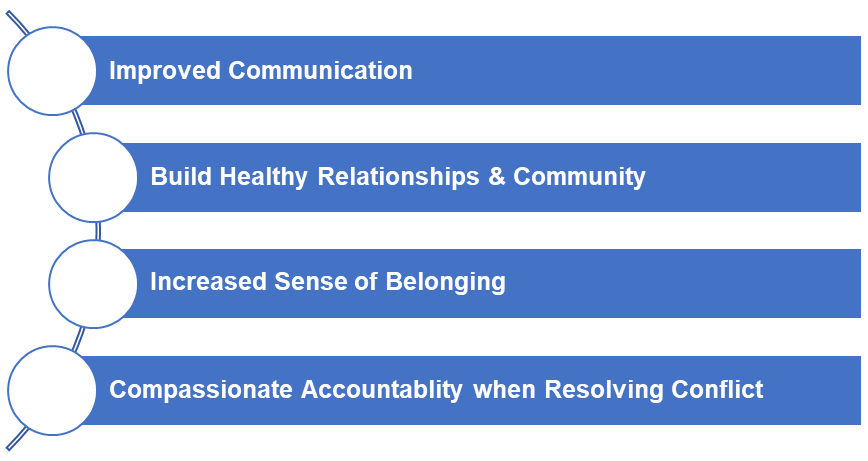- Columbus City Schools
- Restorative Practices
Restorative Practices
What Are Restorative Practices?
-
Restorative Practices as defined by the International Institute for Restorative Practices, Inc. (IIRP) is a social science that studies how to build social capital and achieve social discipline through participatory learning and decision making (IIRP, 2002). The focus is on proactively building relationships and a sense of community to prevent conflict and wrongdoing while developing intentional strategies and responses to address conflict and wrongdoing when it occurs.
80% Proactive
20% Responsive
Educators use two main types of restorative practices in learning communities:
- 80% Proactive district-wide strategies that aim to create a sense of community, build healthy relationships, and develop conflict resolution skills, as well as a sense of belonging and agency.
- 20% Responsive strategies to address incidents of harm. For example: circles, conflict-resolution, peer-led practices.
Our Vision
-
CCS will become an entrusted district of restorative leaders and practitioners through:
- Investing in Restorative Practices
- Embracing our values
- Fostering Relationships
To ensure a healthy, inclusive and safe learning environment for ALL.
-
"To be 'restorative' means to believe that decisions are best made and conflicts are best resolved by those most directly involved in them. The restorative practices movement seeks to develop good relationships and restore a sense of community in an increasingly disconnected world." ~ IIRP, from The Restorative Practices Handbook for Teachers, Disciplinarians, and Administrators
Why Use Restorative Practices?
-
 Restorative practices provide a whole child approach with opportunities to connect, reflect, restore, and identify solutions that are empowering rather than punitive. The practice encourages everyone to take responsibility as it provides an opportunity for everyone's voice to be heard and contribute to decision making. Columbus City Schools believes in the integration of restorative practices, and it shows in the way we think about, talk about, and respond when we interact with others in our schools to build caring relationships and communities.
Restorative practices provide a whole child approach with opportunities to connect, reflect, restore, and identify solutions that are empowering rather than punitive. The practice encourages everyone to take responsibility as it provides an opportunity for everyone's voice to be heard and contribute to decision making. Columbus City Schools believes in the integration of restorative practices, and it shows in the way we think about, talk about, and respond when we interact with others in our schools to build caring relationships and communities.



